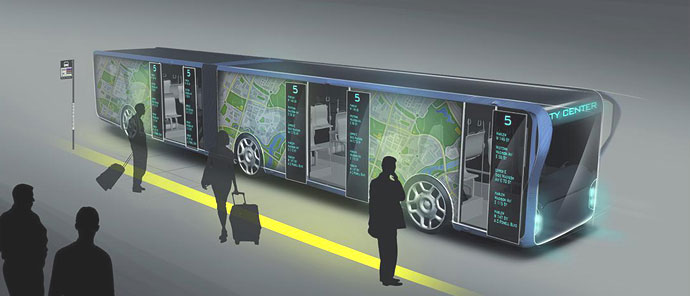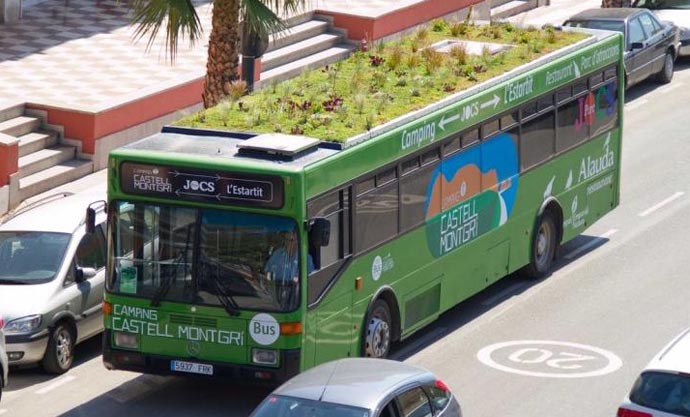Buses are a major part of every modern city’s iconography, but rarely are they considered visually appealing. Tad Orlowski has designed a concept bus that uses technology to transform the appearance of city landscapes for the better.
Both sides of the Willie bus are made of transparent LCD screens. The most likely application for the giant screens would of course be advertising, but in theory they could show artistic films, route plans, weather reports and tourist information.
The Willie bus is not the first attempt that has been made to beautify buses. Others have sought to transform the vehicles’ roofs into mobile gardens.
Urban green spaces are the lungs of the city; vital for photosynthesis, the process by which plants absorb CO2 and release oxygen. Phytokinetic is a pioneering roof garden system designed to be installed on top of public transport vehicles. A lightweight hydroponic foam only 7 cm thick allows the roofs of buses and trains to be converted into mobile gardens that look great and perform a useful environmental function.
According to the creator of Photokinetic, Marc Grañen, “The lungs of a city must grow at the same rate as its population, but much-needed green areas are not always available.”
Photokinetic has grown out of this supposition, with the goal of delivering a practical and tangible solution. If finding new urban spaces for gardens is problematic, we can use spaces that already exist, such as the roofs of city public transport.


Tony Williams
So a mobile advertising screen 15 metres long will be “visually appealing….and transform the appearance of city landscapes for the better”. Perhaps some will disagree.
Ian Byrne
I agree with Tony – all over advertising is likely to be an eyesore, and potentially dangerous through distracting motorists and other road users (OK, maybe even cyclists!). This would be especially true if they showed “artistic films” (or any other sort of films, I guess, but hopefully not ones with road accidents in them…)
And dare I say it that the old London Routemaster is iconic and looks a whole lot better than the mock up image.
Finally, in my thumbs down to the idea, how much extra energy would be needed – even modern screens use some and I suspect that the total power consumption of an all over video screen would be quite significant.
Matt
What an Idiotic contribution to road DANGER. Great big screens to distract drivers by showing films.
My Lud, It wasn’t my Fault. I was just watching this film on the side of the bus so I didn’t see the child crossing the road.
The present silly adverts on busses and commercial vehicles are bad enough. At one time in our area there was a bus with a recruiting advert for the army on the back. Almost the whole of the back of the bus was painted in DPM Camouflage. Very striking in the bus station but what idiot thought that was a good idea on a bus that would be stopping under trees on a rural road possibly in poor light. It was asking for someone to slam into the back of it. At least the bus company had the sense to remove it when the danger was pointed out them.
ETA should stop encouraging these daft ideas like this bus with TV screens on the side or the previous flying bicycle.
whobiggs
Oh great, I have enough of an issue with those rolling screens on bus stops distracting my attention from the road without these. I can see how it would be great at shows and events though but I doubt it would be restricted to only that.